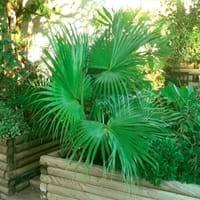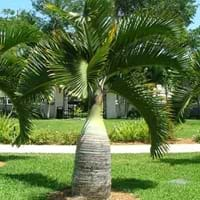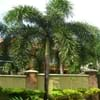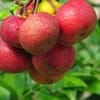Life Span
Perennial
Perennial
Type
Palm or Cycad
Palm or Cycad
Origin
United States, Southeastern United States, South-Central United States
Madagascar
Types
Not Available
not available
Number of Varieties
Not Available
Habitat
Floodplains, Lowland, River side, Swamps
Deep, Dry Forest
USDA Hardiness Zone
7-12
10-15
Sunset Zone
H1, H2, 3b, 4, 5, 6, 7, 8, 9, 12, 13, 14, 15, 16, 17, 19, 21, 22, 23, 24
H1, H2, 22, 23, 24
Habit
Clump-Forming
Upright/Erect
Minimum Height
Not Available
Minimum Width
Not Available
Flower Color
Ivory
Not Available
Flower Color Modifier
Bicolor
Bicolor
Fruit Color
Chocolate, Black
Red
Leaf Color in Spring
Green, Gray Green, Dark Green
Green, Gray Green, Dark Green
Leaf Color in Summer
Gray Green, Dark Green
Green, Gray Green, Dark Green
Leaf Color in Fall
Green, Gray Green, Dark Green
Green, Gray Green, Dark Green
Leaf Color in Winter
Olive, Gray Green, Dark Green
Green, Gray Green, Dark Green
Leaf Shape
Circular, dissected, long and linear
Pinnate
Plant Season
Spring, Summer, Fall, Winter
Spring, Summer, Fall, Winter
Sunlight
Full Sun, Partial Sun, Partial shade
Full Sun, Partial Sun, Partial shade, Full Shade
Type of Soil
Clay, Loam, Sand
Loam, Sand
The pH of Soil
Acidic, Neutral, Alkaline
Acidic, Neutral, Alkaline
Soil Drainage
Poorly Drained
Well drained
Bloom Time
Early Summer
Not Available
Tolerances
Wet Site, Salt
Wet Site
Where to Plant?
Container, Ground
Container, Ground, Pot
How to Plant?
Seedlings, Stem Planting
Seedlings
Plant Maintenance
Medium
Low
Watering Requirements
Do Not over Water, Never Over-water, Requires regular watering, Requires watering in the growing season
Requires a lot of watering, Water Deeply
In Summer
Lots of watering
Lots of watering
In Spring
Moderate
Ample Water
In Winter
Average Water
Regular watering required
Soil pH
Acidic, Neutral, Alkaline
Acidic, Neutral, Alkaline
Soil Type
Clay, Loam, Sand
Loam, Sand
Soil Drainage Capacity
Poorly Drained
Well drained
Sun Exposure
Full Sun, Partial Sun, Partial shade
Full Sun, Partial Sun, Partial shade, Full Shade
Pruning
Remove damaged leaves, Remove dead leaves
Remove dead leaves
Fertilizers
fertilize every 2-3 weeks while growing
fertilize in early summer, Magnesium
Pests and Diseases
Insects
Diamond scale, Fusarium wilt, pink rot, Red blotch
Plant Tolerance
Drought
Wet Site
Flowers
Insignificant
Insignificant
Flower Petal Number
Single
Single
Foliage Texture
Bold
Bold
Foliage Sheen
Matte
Glossy
Attracts
Birds
Not Available
Allergy
Avoid during Pregnancy
Not Available
Aesthetic Uses
Beautification, Landscape Designing, Showy Purposes
Cottage Garden, Showy Purposes
Beauty Benefits
Not Available
Not Available
Environmental Uses
Air purification, Food for insects, Prevent Soil Erosion
Air purification, Indoor Air Purification
Medicinal Uses
Asthma, Baldness, Cold, Cough, Migraines, Sore throat
Not Available
Part of Plant Used
Whole plant
Whole plant
Other Uses
Decoration Purposes, Employed in herbal medicine, Showy Purposes, Used as Ornamental plant, Used for its medicinal properties
Used as Ornamental plant
Used As Indoor Plant
Yes
Yes
Used As Outdoor Plant
Yes
Yes
Garden Design
Bog Garden, Feature Plant, Foundation, Hedges, Mixed Border, Tropical
Feature Plant, Street Trees, Tropical
Botanical Name
SABAL minor
RAVENEA glauca
Common Name
Bush Palmetto, Dwarf Palmetto, Little Blue Stem, Swamp Palmetto
Majesty Palm, Miniature Majesty Palm, Sihara Palm
In Hindi
बौना पल्मेट्टो
Majesty Palm
In German
Zwerg Palmetto
Majesty Palm
In French
Palmetto nain
Majesté Palm
In Spanish
Palmetto enano
Majestad de Palm
In Greek
Νάνος Palmetto
Majesty Palm
In Portuguese
Palmetto anão
majestade da palma
In Polish
Dwarf Palmetto
Majesty Palm
In Latin
Pumilio Palmetto
Caesar Palmarum
Phylum
Magnoliophyta
Tracheophyta
Class
Liliopsida
Liliopsida
Family
Arecaceae
Arecaceae
Clade
Angiosperms, Commelinids, Monocots
Angiosperms, Commelinids, Monocots
Tribe
Not Available
Not Available
Subfamily
Coryphoideae
Not Available
Number of Species
Not Available
Importance of Dwarf Palmetto and Majesty Palm
Want to have the most appropriate plant for your garden? You might want to know the importance of Dwarf Palmetto and Majesty Palm. Basically, these two plants vary in many aspects. Compare Dwarf Palmetto and Majesty Palm as they differ in many characteristics such as their life, care, benefits, facts, etc. Every gardener must at least have the slightest clue about the plants he wants to plant in his garden. Compare their benefits, which differ in many ways like facts and uses. The medicinal use of Dwarf Palmetto is Asthma, Baldness, Cold, Cough, Migraines and Sore throat whereas of Majesty Palm is Not Available. Dwarf Palmetto has beauty benefits as follows: Not Available while Majesty Palm has beauty benefits as follows: Not Available.
Compare Facts of Dwarf Palmetto vs Majesty Palm
How to choose the best garden plant for your garden depending upon its facts? Here garden plant comparison will help you to solve this query. Compare the facts of Dwarf Palmetto vs Majesty Palm and know which one to choose. As garden plants have benefits and other uses, allergy is also a major drawback of plants for some people. Allergic reactions of Dwarf Palmetto are Avoid during Pregnancy whereas of Majesty Palm have Not Available respectively. Having a fruit bearing plant in your garden can be a plus point of your garden. Dwarf Palmetto has showy fruits and Majesty Palm has no showy fruits. Also Dwarf Palmetto is not flowering and Majesty Palm is not flowering . You can compare Dwarf Palmetto and Majesty Palm facts and facts of other plants too.





